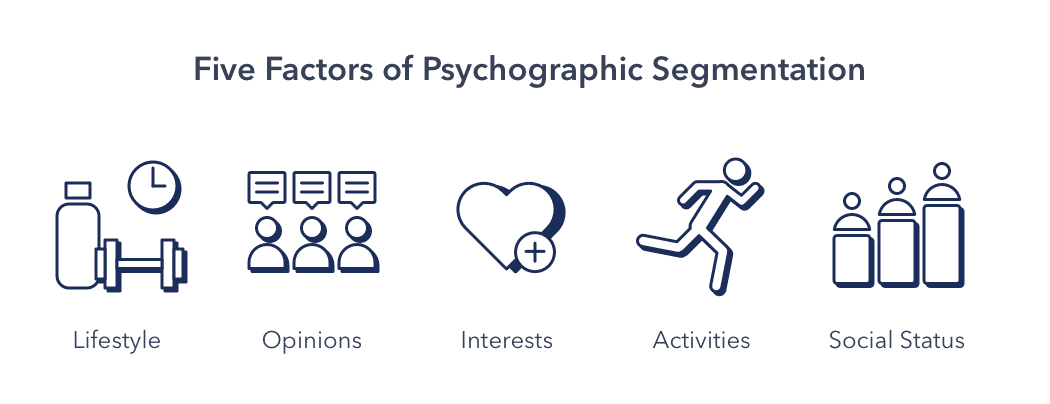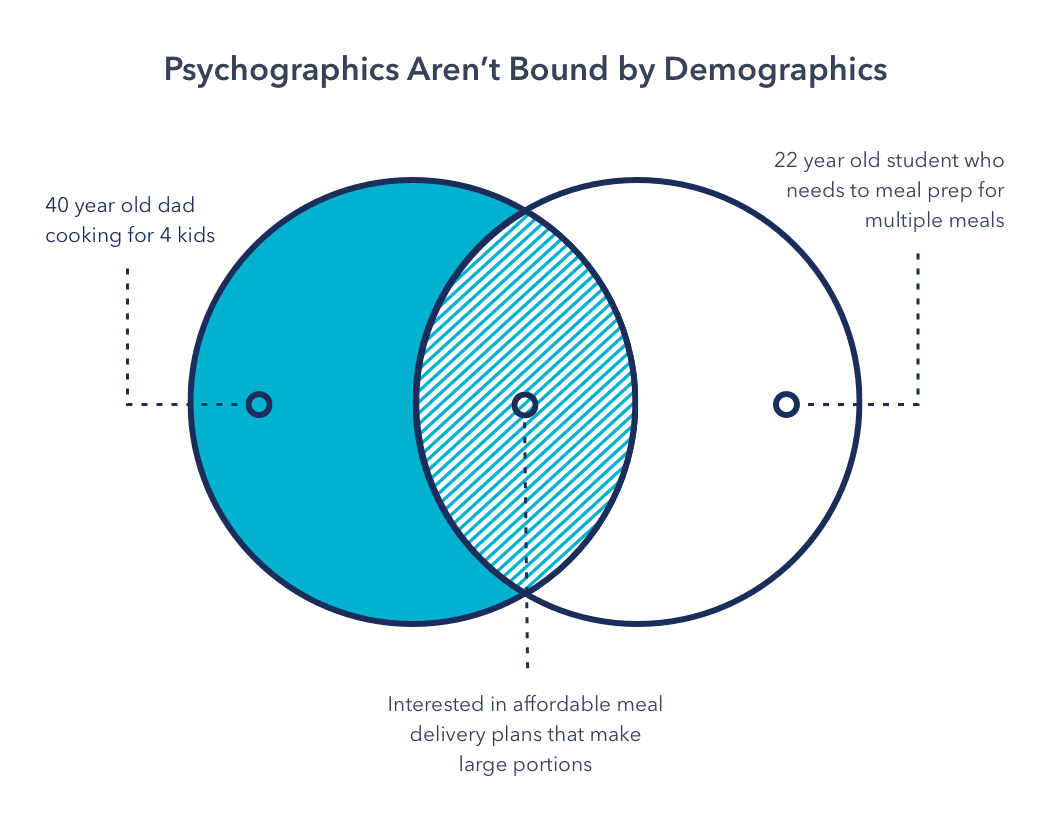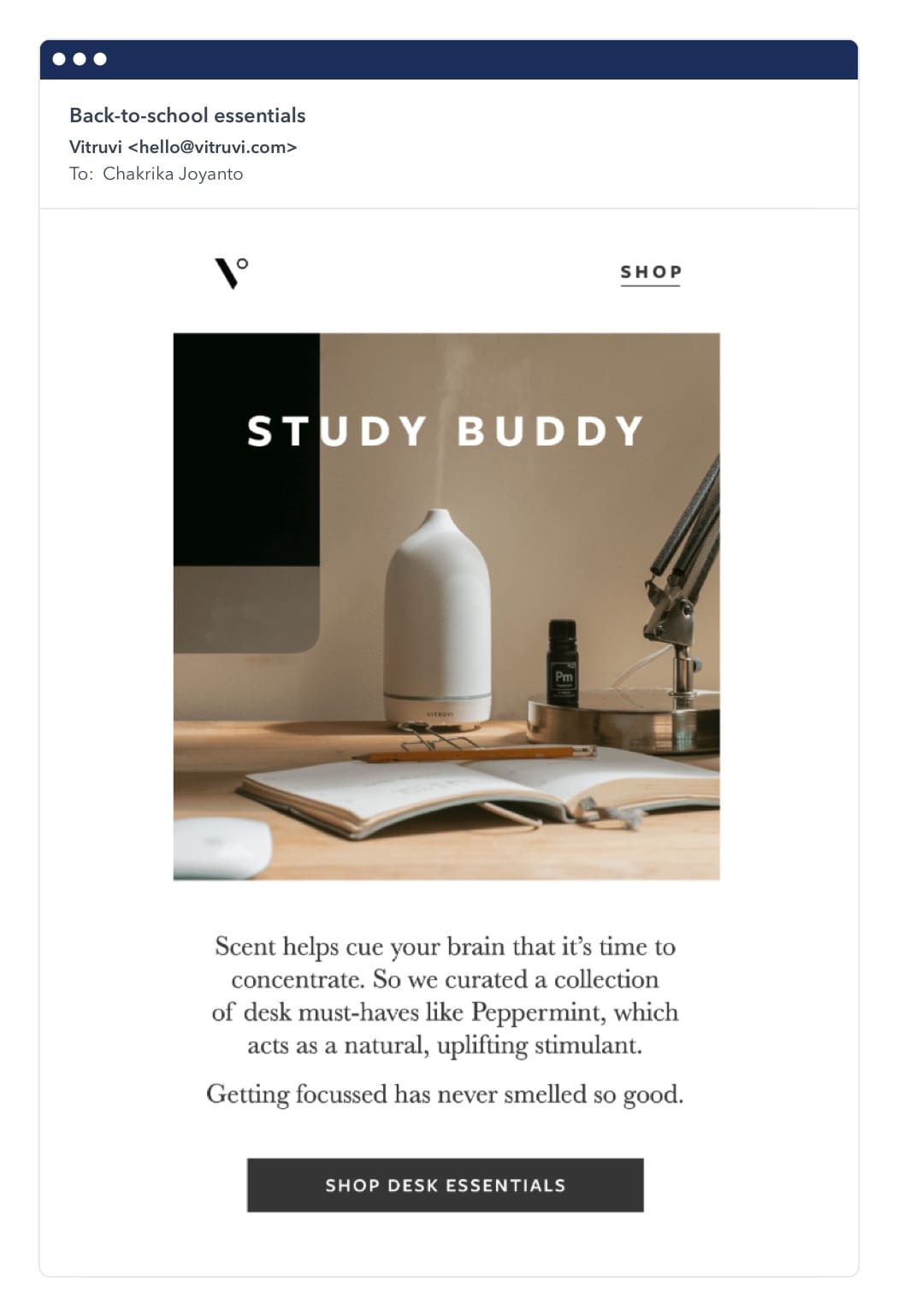
What you need to know about psychographic segmentation
-
Data ManagementUpdatedPosted:
On this page
Stare into my crystal ball, and you’ll see the future of your sales and marketing trends.
Wait, that’s a psychic. Today we’re talking about psychographics.
Psychographic segmentation can’t predict the future, but it can improve the future of your marketing. Let’s explore what psychographic segmentation is, and how to use it.
What is psychographic segmentation?
Our first stop is the psychographic segmentation definition. The word itself is a mouthful, but the meaning is pretty clear.
Psychographic segmentation is a way to organize your audience and customers based on their attitudes, beliefs, and values.
Everyone has these “psychographic” features, and they rule our outlook and decisions.
It may be helpful to think of psychographic segments as the lens we use to view the world based on our preferences and experiences.
Of all the ways you can segment customers, psychographics are a bit more abstract.
Why should we care about psychographic segmentation?
Here are a few ways it can boost your marketing:
- Customize your marketing and messaging by the factors your customers actually consider (nobody thinks of themselves first as a demographic).
- Differentiate your positioning amongst competitors or in a crowded segment
- Create more robust customer personas and segmentation
Psychographic insights are useful across your entire marketing program, too.
Use these segmentation factors on your website, social media, paid social ad targeting, emails, push notifications, checkout experience, and more.
Five factors that go into psychographic segmentation
Psychographic segmentation may be a bit more nuanced than simple demographics, but that doesn’t mean that it can’t be investigated or understood.
Here are five examples of psychographic components that you can use to personalize marketing.
1. Lifestyle
The term “lifestyle” is broad, but it’s crucial to our decisions. Your lifestyle is made up of things such as:
- Your relationship status
- Who you live with
- Whether or not you have kids
- Your daily routines
2. Opinions
Everyone has opinions, but not every stance is vital for marketers to know.
For example, knowing that a person’s favorite color is blue doesn’t actually tell you a lot about the person.
Sure, they may prefer to buy a blue shirt to a red one, but that opinion doesn’t impact every decision. It isn’tquite important enough to rank as a psychographic element.
Instead, psychographic opinions could include:
- A preference for items made in the United States
- A belief that companies should use minimal packaging
- An affinity to different spokespeople
- A bias for different kinds of comedy
- Religious beliefs
3. Interests
Your interests have a clear link to what you buy.
For example, a person who loves the outdoors is more apt to buy a canoe than someone of the same demographic that prefers city living.
Interests could also include:
- Favorite shows, movies, books, and music
- Activism
- Destinations
- Technology
- Fashion
4. Activities
Activities tend to stem from interests. For example, someone interested in personal health is more likely to take a cycling class.
Activities could be:
- Hobbies
- Their line of work
- Tasks to complete at home (like a DIY project)
5. Social Status
Social status affects purchase decisions in a few ways. First, and the most obvious, is pricing.
A budget-conscious mom has a different level of comfort with spending money on organic bed sheets than a high-income-earning woman of the same age.
Social status also affects positioning preferences.
Examples include:
- Value vs. luxury
- Ease of access vs. craftsmanship
Psychographic vs. behavioral and demographic data?
I’ve mentioned that psychographic segmentation is more abstract than other segmentation methods, but let’s dive deeper into the differences. In particular, let’s compare and contrast psychographic segmentation to behavioral or demographic information.
Demographic data is what you would expect to see on a census – categories such as age, gender, or location.
This information is easy to use when creating things like paid social ads, but it doesn’t account for nuances between individuals.
For example, a 30-year old white male interested in hunting is going to have different shopping habits than a 30-year old white male interested in veganism.
Behavioral data keeps track of how customers have interacted with your website or company. This segmentation gives your marketing context, but doesn’t necessarily uncover motivations.
To illustrate the differences between each segmentation type, let’s look at the same example persona using three different methods.
Example persona: Julia
Demographic data: Age 35, female, lives in Grand Rapids, Michigan.
Behavioral data: She abandoned her cart containing a pair of yoga pants, but completed her purchase after a reminder email.
Psychographic data: She leads an active lifestyle and is interested in eco-friendly items, even if they cost a little more.
With each layer of segmentation information, we learn a little bit more about the person and can create relevant marketing for these personas.
One important detail about psychographic data to keep in mind, is that it isn’t bound by demographics.
Two people across different demographics may be drawn to the same marketing materials if they share psychographics, such as interests or opinions.
Examples of psychographic segmentation
Psychographic segmentation is a powerful way to make your product and message more relevant to your audience. What does that look like in action, though?
Here are three great examples of psychographic segmentation in marketing.
First up is Vitruvi. Their email below is promoting a line of scents for an essential oil diffuser.
There are a lot of demographics who may be interested in essential oils, but the demographic they’re targeting are students.
Students come in all ages and demographics, though. Instead of thinking about the ideal user in terms of age, Vitruvi positions the product in terms of goals.
The psychographic segment for this email are people who want to do a good job studying, but may need a little help getting focused. So, the company uses imagery and copy to tap into those motivations.
Next up is Adidas, who uses psychographic traits to stand out in a crowded market. The abandoned cart email below is focused on a pink sneaker, featuring images of young women.
Targeting every woman between the ages of 18 and 25 is too generic of a segment, though.
Instead, Adidas’ email targets girls who are fashion-forward and motivated by trends among peers.
The email talks about the sneaker being a staple in a person’s collection, so this isn’t an eco-conscious person who buys one pair of shoes and wears them every day.
This psychographic segment may value variety, so Adidas mentions their customization options.
Finally, valuing the opinion of peers and being swayed by social media is another psychographic opinion at play.
Lastly, we’ll shift gears for a moment to push notifications. This is another method where you may base your strategy on behavioral data, but you can make it more relevant and personalized with psychographic segmentation.
Sephora does just this in their push notification below.
At its core, the push notification is for a weekly roundup featuring exciting new products for sale. However, Sephora used an understanding of their customer’s personality to personalize the copy.
Sephora understands that some of their customers may really enjoy shopping, but tell themselves they need to hold back at times.
Addressing this temptation makes the message feel a bit more like it’s from an understanding friend as opposed to a faceless company.
How to obtain and manage psychographic data
You know what psychographic segmentation is, you’ve seen the examples, and you’re excited to use it in your own marketing.
Now what?
If psychographic segmentation is more abstract than demographics and behavioral, then how do you obtain the data and use it?
Where to find psychographic data
The best outcomes in life and business are worth a little extra work, and psychographic segmentation is no different.
While demographic segmentation is readily available on social media, and behavioral data is based on simple actions you can track in analytics, the easiest way to get psychographic information is to ask.
1. Surveys
If you want to gather psychographic information at scale, then surveys are your best bet.
You can ask customers about their purchase decisions, what their priorities are, what other companies they shop with, how they learn about new products, and more.
Below is an example survey for a gathering psychographic information about fashion and shopping habits.
Just be mindful of who you’re sending a survey to, and when. A loyal customer is more likely to spend more time on a poll than a new one.
2. Interviews
Another way to gather psychographic information is through surveys. These could either be one-on-one with your most engaged users or as a part of a focus group.
While interviews take more time and effort, they can be a goldmine for customer insights.
You may want to start with conversations to learn about specific customers, and then see how that aligns with survey results on a larger scale.
3. A/B Testing
Finally, you can use A/B tests of copy or positioning to learn about customer opinions and interests. Try highlighting different benefits or features in each version to see what resonates with customers.
Managing psychographic profiles
Gathering and using psychographic information presents the same challenges as any type of data.
While data is useful for creating personalized marketing, too much unorganized information gets in the way of workflow and decision making.
The psychographic information you gather over time will grow and change, which means you need a way to manage it.
Here are some tips for handling psychographic profiles.
- Use integrations to keep everything together. Scattered information is hard to work with, so aim to collect and store information in programs that work well together.For example,Vero integrates with Segment, making it easy to collect data from many sources.
- Look for patterns. Psychographic segmentation is more personalized than demographic data, but you can’t create unique marketing for each individual.Instead, look for patterns in survey responses and actions that can be grouped together as filters or tags.
- Keep segmentation and automation together. In addition to using integrations to consolidate data, your life will be easier if your psychographic segmentation lives beside your automation programs.The more you can combine data with workflows, the less you have to move between tools.








